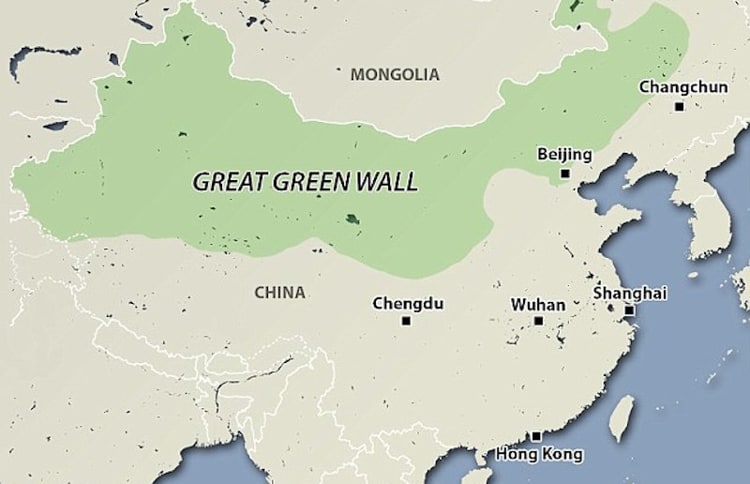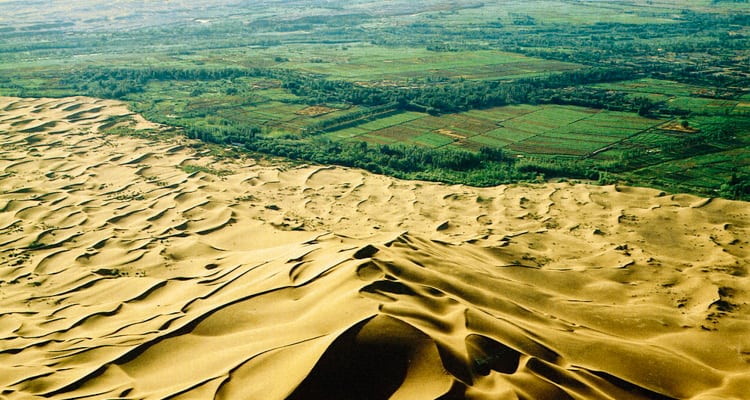
China has more than one great wall, but the most recent one was formed solely for the purpose of combating desertification.
The Gobi Desert, a sparse, desolate and barren region between the middle-northern border between China and Mongolia, is presently the fifth largest desert in the world – and it’s rapidly growing.
Encompassing an area of 1.3 million square kilometres, the Gobi Desert is a vast canvas of cascading sand dune and wide expanses of dry heat waves. It may be beautiful, but between it and the Taklamaken Desert in the Northwest of China, its contributing to the issue of deforestation and causing sandy winds to blow into Beijing.
To combat the expanse of the desert, China is building its second greatest wonder and achievement thousands of years after the first. The purpose of this wall is not to keep invading Mongol hordes from its border, however, but to create a green oasis around the Gobi Desert.

In 1978, the Chinese Government started the Three-North Shelterbelt Project, also known as the Great Green Wall, to combat the loss of its grassland to the Gobi Desert.
The plan was to grow a 4.500-kilometer area along the north part of China’s desert covered in 100 billion trees.

As of today, over 66 billion trees have been planted with methods such as aerial seeding and cash incentives to farmers who plant trees, shrubs and other greenery.
According to a study conducted by the Institute of Geographical Sciences and Natural Resource Research in Beijing, the project is currently seeing positive results.

Said Minghong Tan, lead researcher:
“Vegetation has improved and dust storms have decreased significantly in the Great Green Wall region, compared with other areas.”
The plan has received some criticism. A few researchers, including Hong Jiang of the University of Hawaii at Manoa, say that the plan is destined for failure because of China’s aggressive rush to plant trees.
Said Jiang to New Scientist: “Instead of controlling nature, we need to follow nature.”
Others, such as David Shankman of the University of Alabama in Tuscaloosa, aren’t sure how sustainable the trees in the Green Wall would be. He asks, “What is the mortality rate of planted trees? What happens when they die? And how do these trees affect grass and shrubs, which, in general, are more resistant to drought and more effective at erosion control?”

Those presently invested in the task, however, are optimistic. After all, President Franklin D. Roosevelt established the Great Plains Shelterbelt. For that project, about 220 million trees were planted by 1942, entrenching an area of 29,900 kilometres from Canada to the Brazos River.
And in Africa, there is the Great Green Wall of the Sahara and the Sahel Initiative (GGWSSI). Launched in 2007, the African Union (AU) plans to reverse the effects of land degradation and desertification.
One thing is for sure, something needs to be done. Is this the right approach, however?
Comment your thoughts below and share this article!
This article (China Is Combating Desertification By Planting A Great Green Wall of Trees) is free and open source. You have permission to republish this article under a Creative Commons license with attribution to the author and TrueActivist.com


